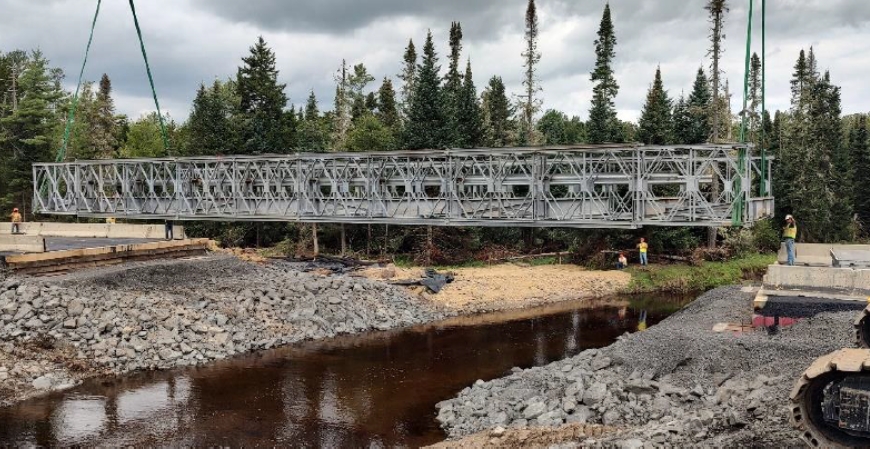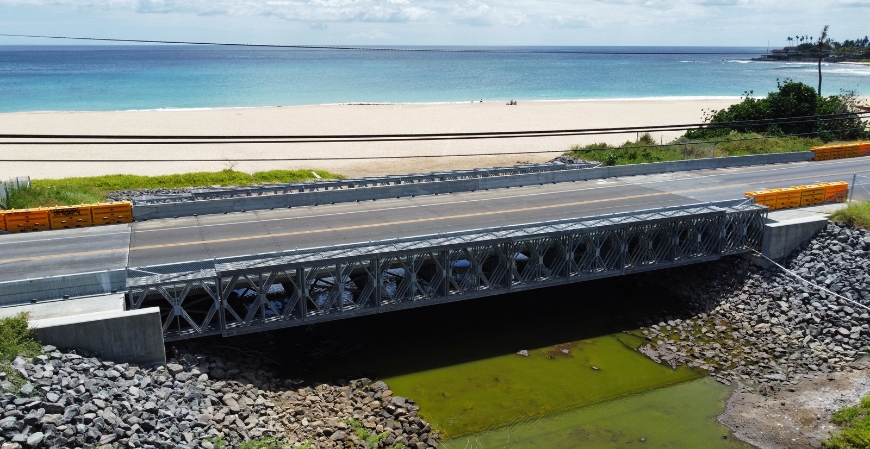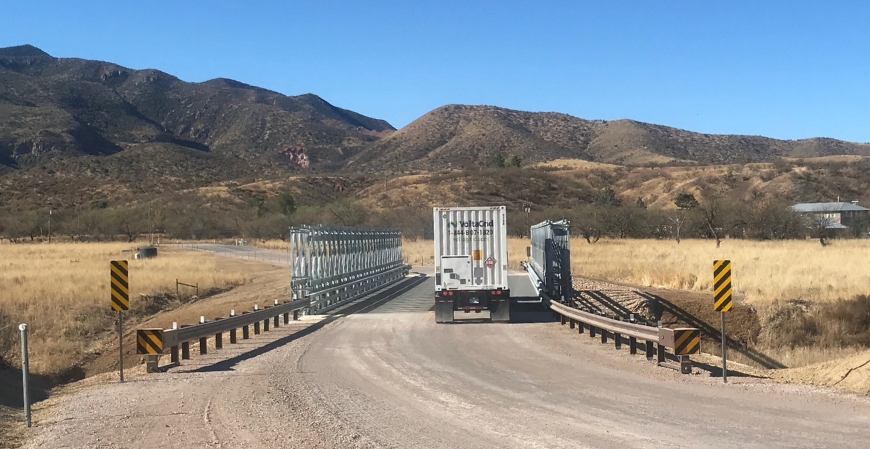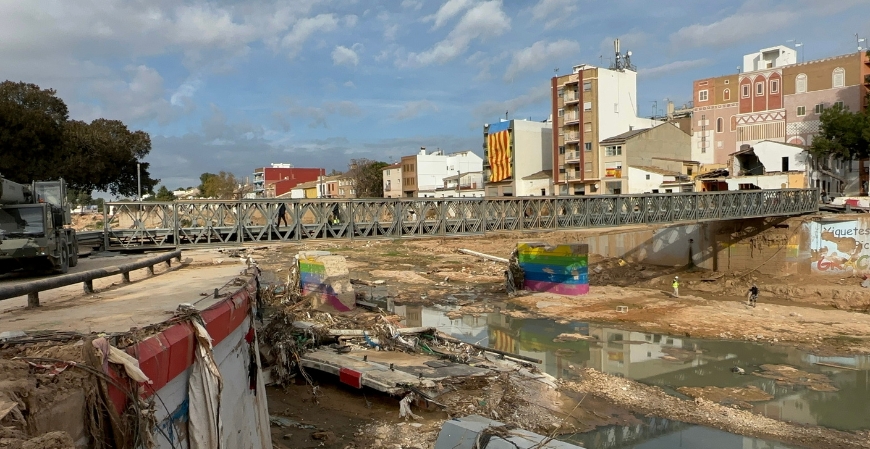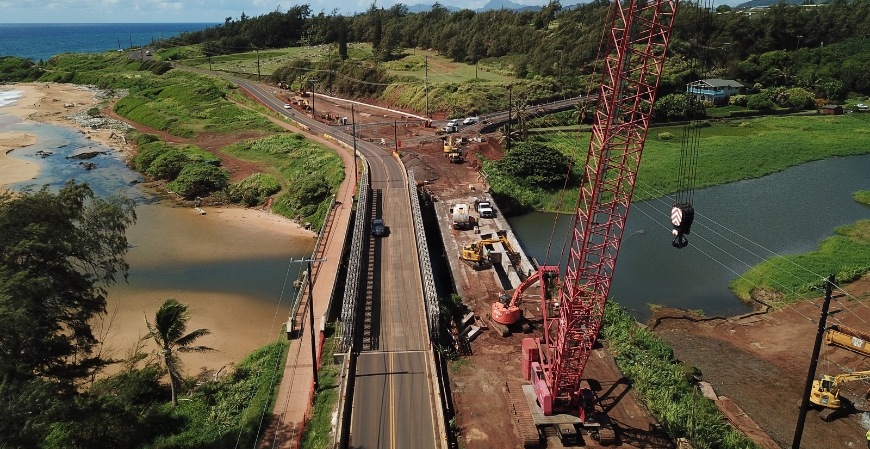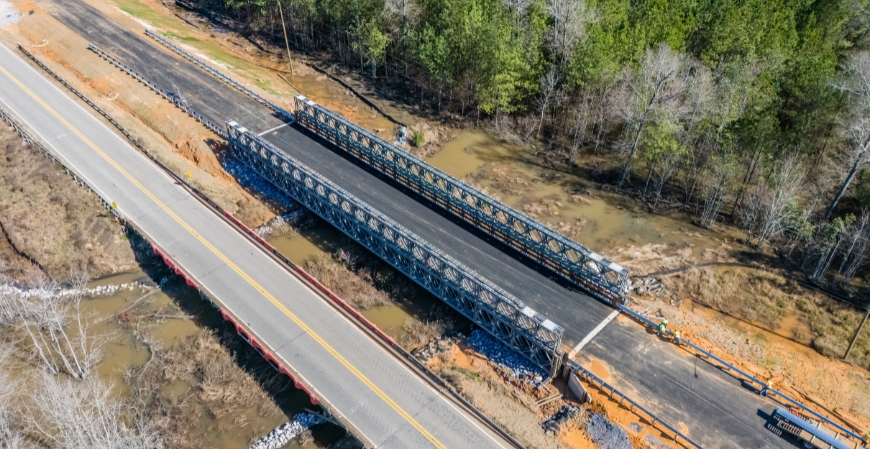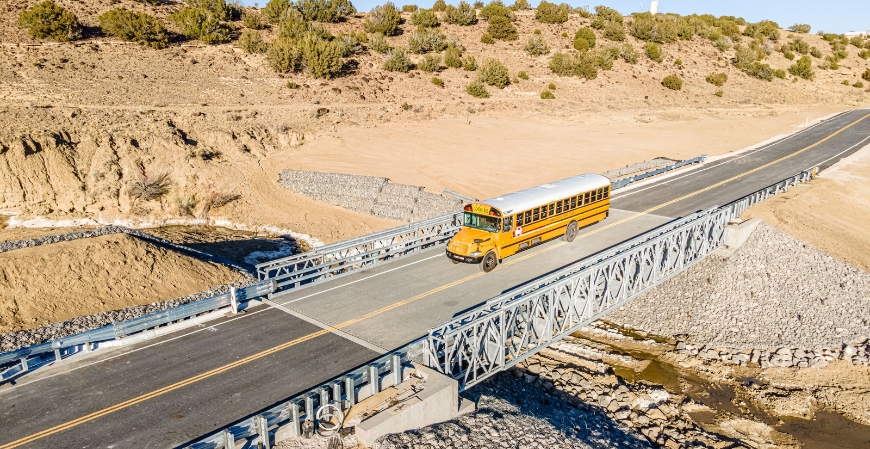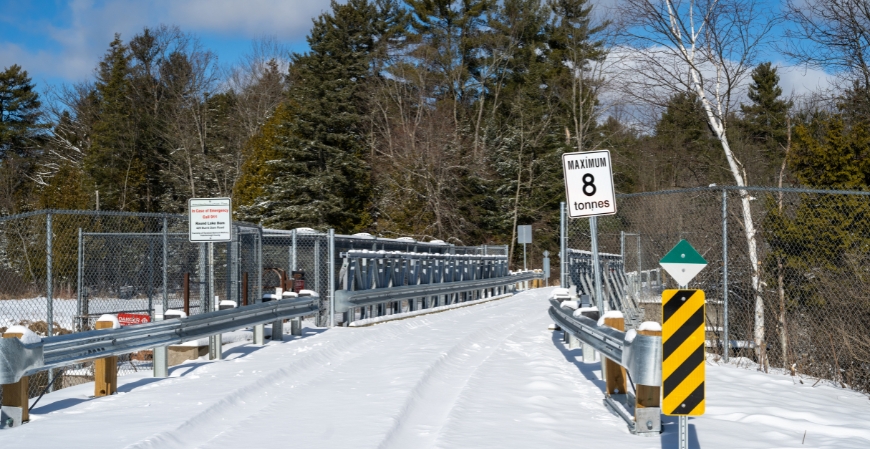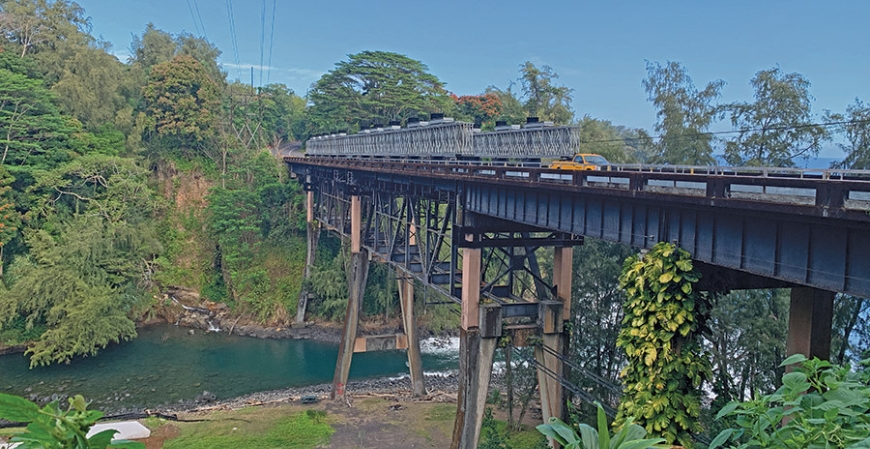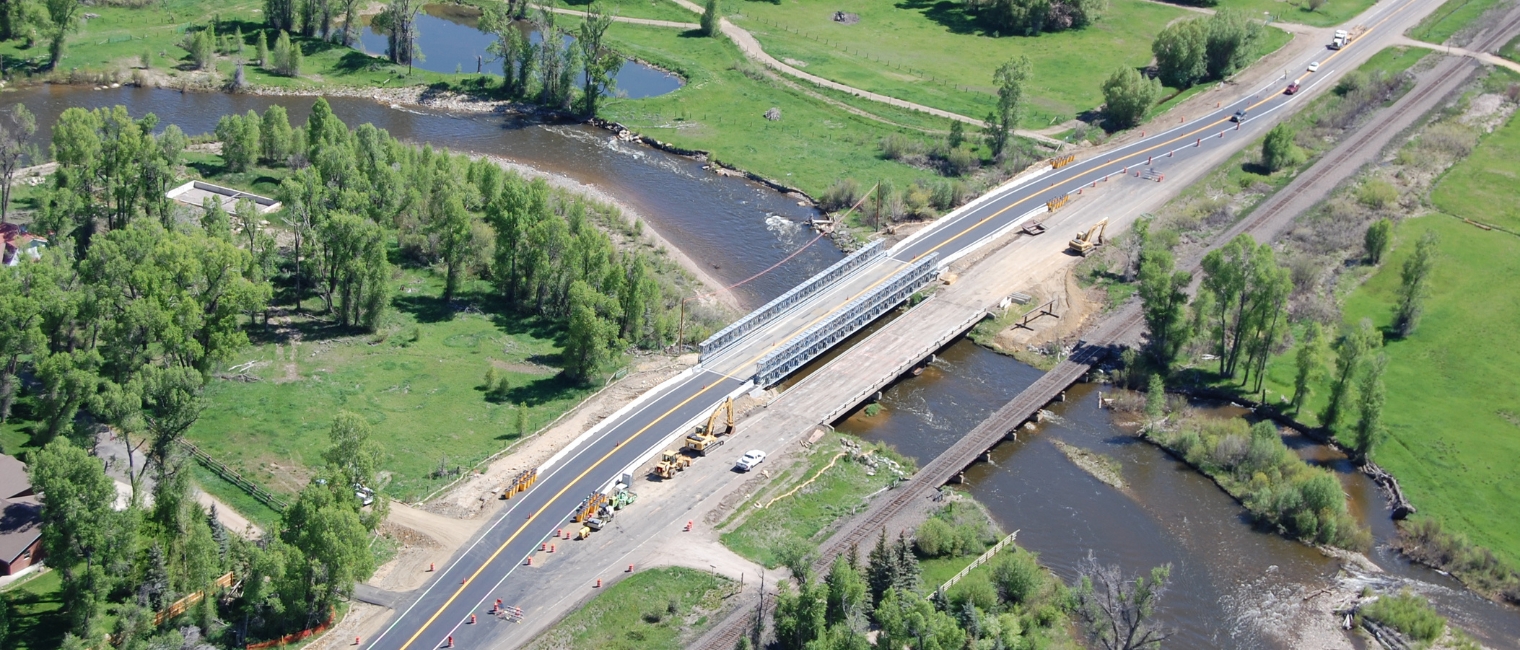
Solution helps minimize disruption to the ski season and the Steamboat Springs community during the construction of the bridge over the Elk River on US 40
The Colorado Department of Transportation (CDOT) put the CMGC project out to bid with a March start date beginning with the installation of a detour structure, and final bridge completion in November. March is Colorado’s most snowy month so snow delays were probable.
CMGC type projects typically have minimal plans to work from. One critical piece of the planning for this bridge replacement project was to determine the type of temporary bridge to be used. The gap to be spanned by the temporary bridge was estimated to be between 180 and 200 feet. The rest of the details on the detour structure were set to Interstate Requirements, as US 40 is the emergency detour route for both I-70 and I-80, and had to be HS-20 Live Load rated at a minimum 26 feet wide. Additionally it required a TL-3 guardrail. The CDOT had suggested a typical beam on piers type detour structure, which required working in the Elk River to install piers. The specifications were amended a few days before the bid to HL-93 live load, and TL-4 guardrail.
Duckels Construction specified a detour structure that could meet the multiple span requirements. Acrow recommended using a clear span 200 foot structure which would eliminate in-water work, piers, permits and all of the associated costs. Such a structure would also have minimal environmental impact on the Elk River.
The modular nature of the Acrow bridge allows for rapid assembly and installation, and the ability to rent a completely engineered prefabricated temporary bridge rather than having to design and construct one from scratch is cost effective. As a result, Duckels Construction awarded the project to Acrow. CDOT gave their approval for the Acrow structure and parts were delivered that week. Then it snowed. Spring snow in the Rocky Mountain West can be heavy but typically melts quickly.
Duckels crew worked through the tough weather and got the assembly started. Roller stations were installed on the west side of the river just north of the existing bridge. Assembly began behind the west abutment as the abutments were constructed. The installation was done by a full cantilevered launch process. The assembled bridge launching nose and frame was progressively pushed out over the Elk River as more bridge frames were assembled. The installation was completed by the Duckels crew in 18 days, well within CDOT’s allotted 28 days.
A narrow detour area required a separate parts laydown area a couple of miles away which meant that the parts had to be delivered as needed on a flatbed that could be placed behind the work area. Despite that and the snow delays, the schedule was met. Once the Acrow bridge was across, the launching nose was removed, the bridge was jacked down onto its bearings and then decked.
Acrow Panel Bridges include HL-93 rated deck panels. These tough deck units are shop coated with a two-part epoxy and aggregate type coating that gives excellent friction and durability to meet Interstate Highway standards. Once these deck panels are in place, they are ready to drive on. Final touches are striping and installation of the TL-4 guardrail. Once these two final steps were completed, traffic was moved off the US 40 to the Acrow bridge detour, which remained in place until the new structure was completed.
